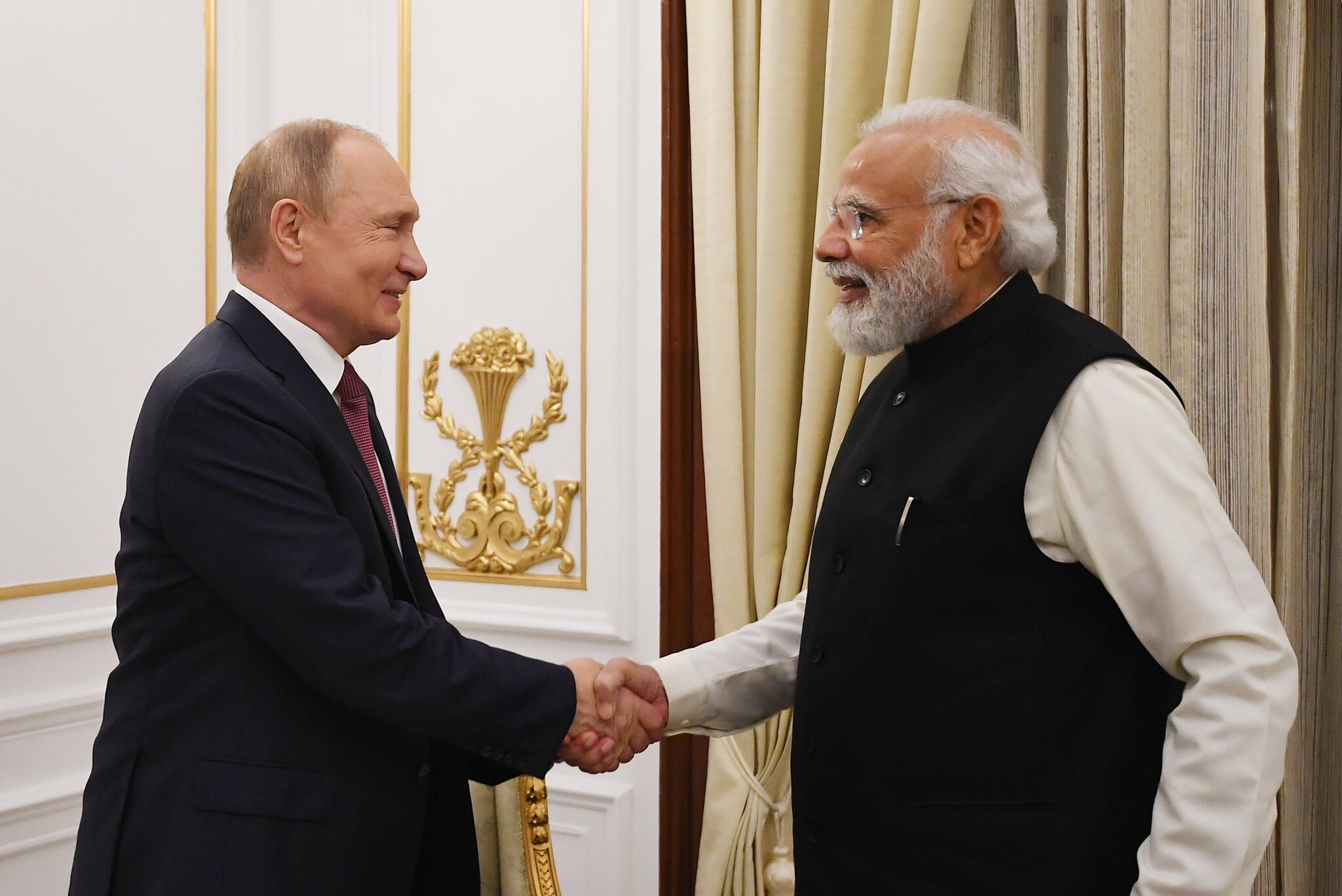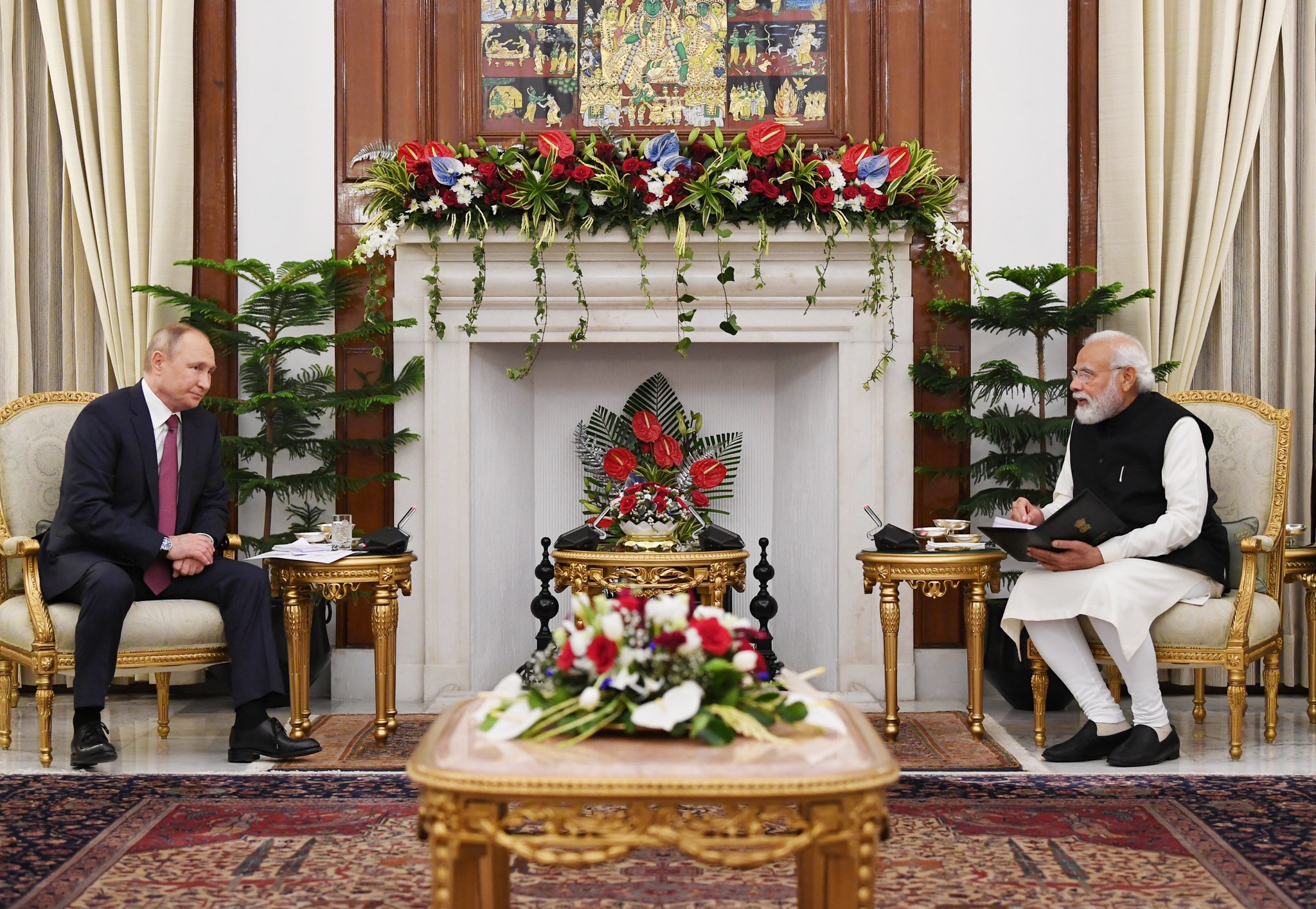
On Monday India Prime Minister Narendra Modi and Russian President Vladimir Putin announced a $5.4 billion dollar missile defence system sale to India despite warnings from the United States of sanctions.
The sale of Russia's S-400 missile defence system was also accompanied by a $600 million deal to manufacture hundreds of thousands of Russia's AK-203 rifles in Uttar Pradesh. These rifles will replace the older Kalashnikov-style rifles currently used by Indian troops. Both Modi and Putin further agreed to extend cooperation between their countries on military technology over the next decade and triple bilateral trade to $30bn by 2025.

Secretary of Defense Lloyd J. Austin III meets with Indian National Security Advisor Ajit Doval - 2019
Photo Credit: US Secretary of Defence
This agreement comes despite warnings from US Defence Secretary, Lloyd Austin, in March that the sale of Russia's equipment could trigger US sanctions.
“We certainly urge all our allies and partners to move away from Russian equipment … and really avoid any kind of acquisitions that would trigger sanctions on our behalf,” Austin told reporters.
In December 2020, the Trump administration imposed sanctions on Turkey for acquiring the same system three years after its purchase. This was despite Turkey being a NATO member and served as a warning to countries such as Egypt and Saudi Arabia who are considering purchasing equipment from Russia. The sanctions were carried through the Countering America’s Adversaries Through Sanctions Act (CAATSA).
Growing security concerns

The agreement follows the fall of Kabul to the Taliban which has heightened security concerns in Delhi. Last year also saw deadly border skirmishes in the Himalayan region in 20 Indian soldiers and 43 Chinese soldiers were killed in melee combat.
A joint statement from the Indian and Russian premiers, following their meeting, stressed their concern that
"Afghanistan’s territory should not be used for sheltering, training, planning or financing any terrorist groups".

Modi further reaffirmed Indo-Russia relations during the meeting stating:
“New geopolitical angles have emerged. Amidst all such variables, Indo-Russian friendship has been constant.”
India has long relied on Russia for military equipment over the decades with approximately half of its arms supplies coming from Russia.
This comes despite growing anxiety in the US over growing Russian aggression with the build of forces near the border of Ukraine. Last week, US Secretary of State, Anthony Blinken, reaffirmed US commitment to Ukraine's security and warned that Russia would face severe consequences if it took aggressive action.
A cheaper alternative

In explaining the decision to opt for Russian arms, Nandan Unnikrishnan an expert on India-Russian relations for the New Delhi-based Observer Research Foundation, noted that "while American or Israeli equipment is state of the art, the money it requires is three times more".
The S-400 surface to air missiles costs approximately half the US Patriot system. Indian military officials have come to describe the system as "a booster dose" for the country's military.
Unnikrishnan further notes that India is unlikely to face severe repercussions from the US as he states:
“The U.S. is sophisticated enough to understand that they should not be harming their own potential allies in a bigger picture struggle they have.”
A US failing?
Kenneth I. Juster, a former US envoy to India, has argued that this arrangement also stems from a failure of the Obama administration to meet the needs of India's military.
Discussions over the S-400 go back to 2012 when India was in similar discussions with the US but the Obama administration were "reluctant to provide advanced missile defence systems to India" Juster writes.
By late 2018 the US offered the Patriot Advanced Capability-3 and the Terminal High Altitude Area Defense to counter Russia's equipment, however; "from the Indian perspective, however, the U.S. equipment does not have the same needed".
Juster argues against the threat of US sanctions for India writing:
“The U.S.-Indian partnership is now critical to promoting a free, open, and stable Indo-Pacific region [...] It [The US] should recognize that the continued threat of CAATSA sanctions against India is counterproductive in terms of the bilateral partnership as well as the broader U.S. strategy in the Indo-Pacific".
Read more here.




